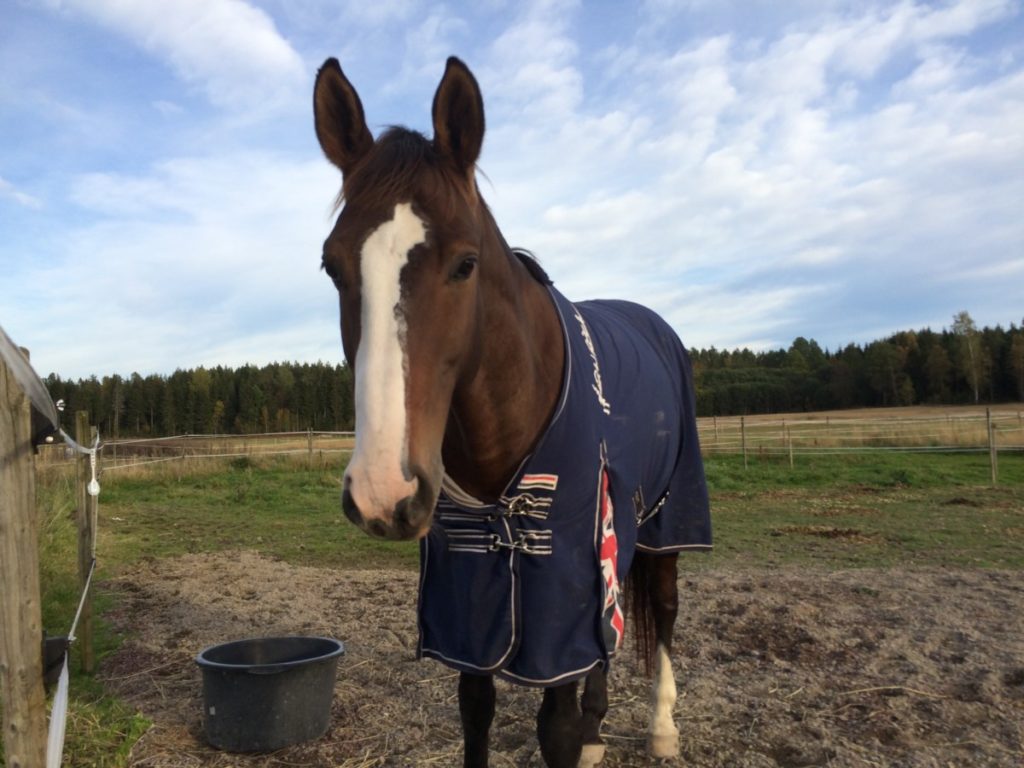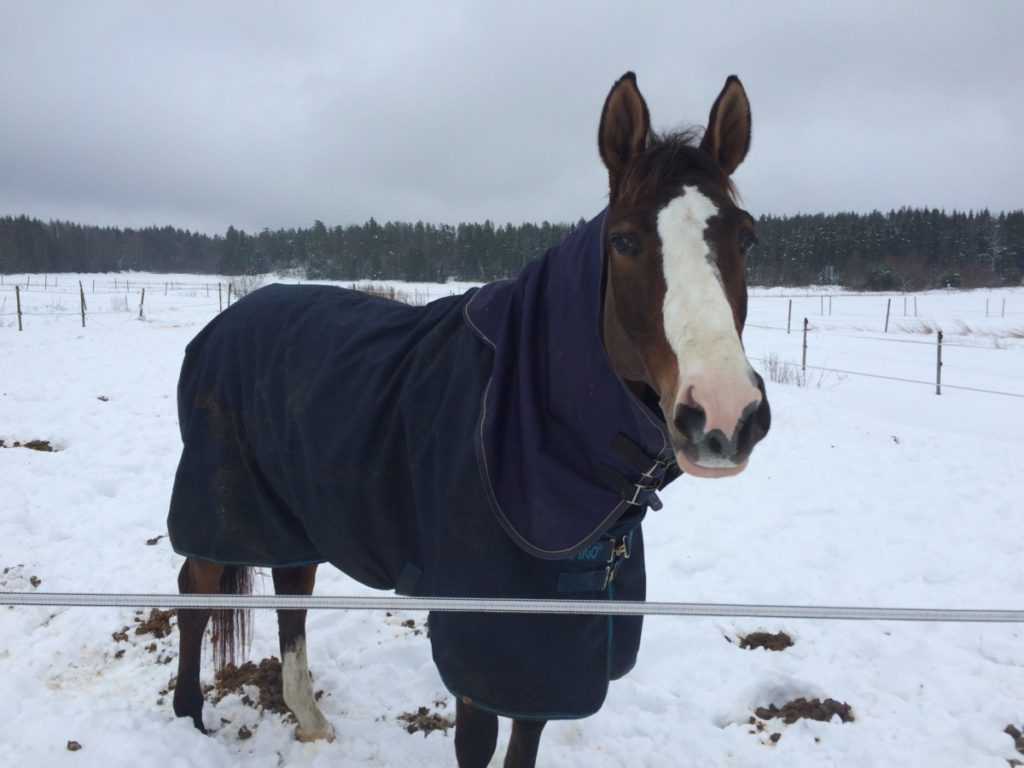Most people understand the need for hoses to be blanketed in winter, but horses are often fitted with a fly sheet in the summer months, which may be confusing. Although some horse owners do not believe that fly sheets or summer blankets are safe or even necessary, there are good reasons why fly sheets may benefit your particular horse.
Horses wear blankets in summer to protect from UV rays and prevent stress caused by stinging and biting insects. Horses with sensitive skin benefit from summer blankets called fly sheets made with large mesh material for breathability and fitted correctly to the horse’s dimensions.
Horse owners may be divided in whether they believe in the benefits of a fly sheet in summer. Despite the naysayers, there is firm support from veterinary experts that a fly sheet may benefit horses. If you are unsure about the benefits of summer blanketing, we have provided you with some information to help you decide whether it is the best option for your horse.
Should You Rug a Horse in Summer?
Choosing to rug your horse in summer depends on a variety of factors. The breed, age condition, and coat of your horse are factors to consider, as well as the material of your blanket.
In summer, dense material rugs impede your horse’s ability to cool themselves by evaporation and trap moisture, increasing your horse’s core temperature.
However, summer fly sheets are often made with a lightweight, breathable mesh that allows airflow to cool your horse and prevent stress caused by flying insects. Summer months can be a joy to both horse and rider, but unfortunately, the summer month brings those annoying bugs such as biting midges, sand flies, gnats, and flies.
Although horses may thrive in summer without a flysheet, there are some excellent reasons to consider using a fly sheet in summer.
Protection From Insects
Nearly 1,000 Culicoides species are found worldwide and include flies and gnats that bite and sting and generally cause havoc with your horse in summer. The insects of this family can cause hypersensitivity reactions to the antigens found in the insect’s saliva. Stress reactions in horses to insects are common and may include running fence lines or pacing and leading to overheating.
A properly designed, lightweight, and breathable fly sheet protects your horse’s body from most of these bites and reduces stress in the summer months. Particularly horses with sensitive skin greatly benefit from having the protection of fly sheets in summer. An excellent example of a fly protective sheet is the Rider’s International Stretch Micro Mesh Fly Sheet.
Ultraviolet Sun Protection
The sun’s rays may be harmful to your horse, and specifically formulated fly sheets offer the added protection of reflective UV resistant materials. Darker horses tend to absorb more heat in summer months, leading to coat bleaching and overheating. Lighter horses may be damaged by the sun’s full rays and would also benefit from summer cover. An excellent example of a UV-resistant flysheet is WeatherBeeta Kool Coat Airstream Detach-a-Neck Sheet.
Health Benefits
Some insects carry diseases or bacteria that may be harmful to your horse. A summer sheet can keep scratches or sores covered from certain insects that use these areas to lay their eggs. Botflies or Cuterebra fontinella are particularly pernicious, and their larva can burrow into your horse’s flesh, causing infections.
Some fly sheets are made with insect repellent in the material, which further protects your horse from potential skin lesions or hypersensitivity. A great example of this kind of repellent sheet is the Rambo Fly Buster Fly Sheet.

At What Temperature Should a Horse Wear a Blanket?
Once again, one should consider your particular horse when deciding on what temperature you should blanket them. Senior horses or horses with compromised immunity may need extra care and be more sensitive to temperature. The breed of your horse is also essential as some breeds such as Thoroughbreds may have breed-specific sensitivities to a temperature that the native, hardier breeds of horse do not.
The Horse site offers an excellent table to use as a general rule of thumb, but one should always ensure that you consider your horses’ particular needs.
| Temperature | Unclipped Horses | Clipped Horses |
| Above 50°F (10°C) | no blanket | no blanket or just a sheet |
| 40-50°F (4.4°C to 10°C) | no blanket | sheet or lightweight |
| 30-40°F(-1.1°C to 4.4°C) | no blanket, or only a lightweight | mid to heavyweight |
| 20-30°F (-6.6°C to -1.1°C) | no blanket, or a light- to midweight | heavyweight |
| 10-20°F (-12°C to -6.6°C) | mid to heavyweight | heavyweight plus a sheet or liner |
| Below 10°F(-12°C) | heavyweight | heavyweight plus a sheet or liner or neck cover |
Are Horse Blankets Good or Bad?
Horse blankets may provide protection from the cold or reduce your horse’s stress from insects and ensure that your horse does not suffer UV damage. However, the blanket can be a welfare issue if misused or fitted incorrectly. Horse blanket may be harmful if:
- Your blanket is inappropriate for the season. Placing a dense fiber horse blanket in the summer months may cause your horse to overheat or even cause hyperthermia or heatstroke.
- Your blanket is not fitted correctly. An improperly fitted horse blanket is a hazard as the blanket may slip and cause injuries to your horse. Your blanket must be the proper fit for your horse and correctly attached so that no loose straps or ties may cause your horse to become entangled.
- The blanket is placed on the horse at inappropriate times. One should never put blankets on horses who are drenched in sweat, especially in extreme temperatures. The moisture trapped under dense materials may impede your horse’s ability to cool itself through evaporation or trapped moisture that leads to a chill in colder weather.

How Hot Is Too Hot for a Fly Sheet?
To determine whether the environment is too hot for you to use a fly sheet depends on several factors. With the variety of horse breed, condition, colors, and coats, it is essential that you never use general temperature guides without factoring in the specifics of your particular horse. When deciding whether a flysheet is appropriate in hot weather, you should consider:
- The weight and material of your flysheet. Fly sheets with a dense weave fitted closely to your horse’s body will not allow your horse to cool its core temperature from evaporation. Lighter sheets with larger mesh and loose fitted designs enable your horse to breathe and are more suited to warmer temperatures.
- Your horses breed and condition. Your horse’s BCS or Body Condition Score should be considered when determining whether your horse is likely to overheat. For example, a draft horse with a BCS of 8 would have more difficulty dealing with high temperatures than a lighter horse with a lower BCS.
- Access to shaded areas. You should factor in your horse’s access to shade or whether there is access to a breeze or an area where fans are installed for cooling.
- Take note of humidity levels because temperature alone is not always an accurate reflection of the heat index. You should consult a weather app to ensure that the humidity levels will not drive the heat factor upwards considerably.
- The temperature does not exceed 90°F (32.22°C.). If the temperature exceeds 90°F, you should ensure that you provide a cool environment for your horse to tolerate the wearing of a flysheet.
What Happens if a Horse Gets Too Hot?
There are typically two reactions if a horse’s rectal temperature exceeds 103.5°F (39.72°C), and they are heat stroke and heat stress. Typically, heatstroke occurs over a short period, such as when a horse is confined in a high-temperature environment with little to no ventilation. Heat stress often occurs during exercise when the horse’s cooling mechanisms are overwhelmed or inadequate.
Physiological Response to Overheating
Heat stress or heat exhaustion occurs when a horse suffers from prolonged fluid and electrolyte loss during intense exercise. High ambient temperatures and poor fitness often work in combination to overwhelm your horse’s ability to cool itself down. A horse’s normal rectal temperature during exercise should be between 101-103°F (38.33°C-39.44°C.). If your horse’s temperature exceeds 103.5°F (39.72°C), your horse is overheating.
As your horse exercises, the blood from its heart is diverted to the skin away from its muscles to provide cooling. The temperatures continue to rise, and the surface evaporation no longer keeps pace with the heat build-up. In that case, their muscle fibers’ action becomes impaired and leads to fatigue and exhaustion.
When the horse loses fluids through sweating, the horse will begin to dehydrate. The blood flows to the skin’s surface areas diminish and limit the cooling provided by sweating if the exercise continues without any means to rehydrate.
If the body temperature exceeds 106°F (41.11°C), the horse’s oxygen needs might exceed the respiratory system’s amount of oxygen, resulting in hypoxemia. Hypoxemia may lead to heart, liver, kidney, heart, and brain damage. Above 107°F (41.66°C) may result in convulsions, coma, or death.
Conclusion
If your horse is sensitive to insect bites or has a dark coat or a very light coat, summer fly sheets are a great option. If your horse has plenty of shade or facilities with fans or adequate ventilation, fly sheets are unnecessary. However, they provide practical benefits, and if they are fitted correctly and are made from a lightweight and breathable weave, they may provide comfort for your horse in the summer months.
Sources
- New Mexico State University: Help Your Horse Handle Heat Stress
- Triple Crown Feed: Thermoregulation in Horses
- The Horse: When is it Too Hot for My Horse to Wear a Fly Sheet?
- Schneiders: Can My Horse Wear a Flysheet in Summer?
- Colorado State University: To Blanket or Not to Blanket? That’s a Good Cold-Weather Question
- The Horse: Horse Blanketing FAQs
- Veterinarian Key: Insect hypersensitivities
- Wikipedia: Cuterebra fontinella
- The Horse: What’s Your Horse’s Body Condition Score?
- The Horse: Heat Stress in Horses
- Pubmed: Mechanisms of Exercise-Induced Hypoxemia in Horses
